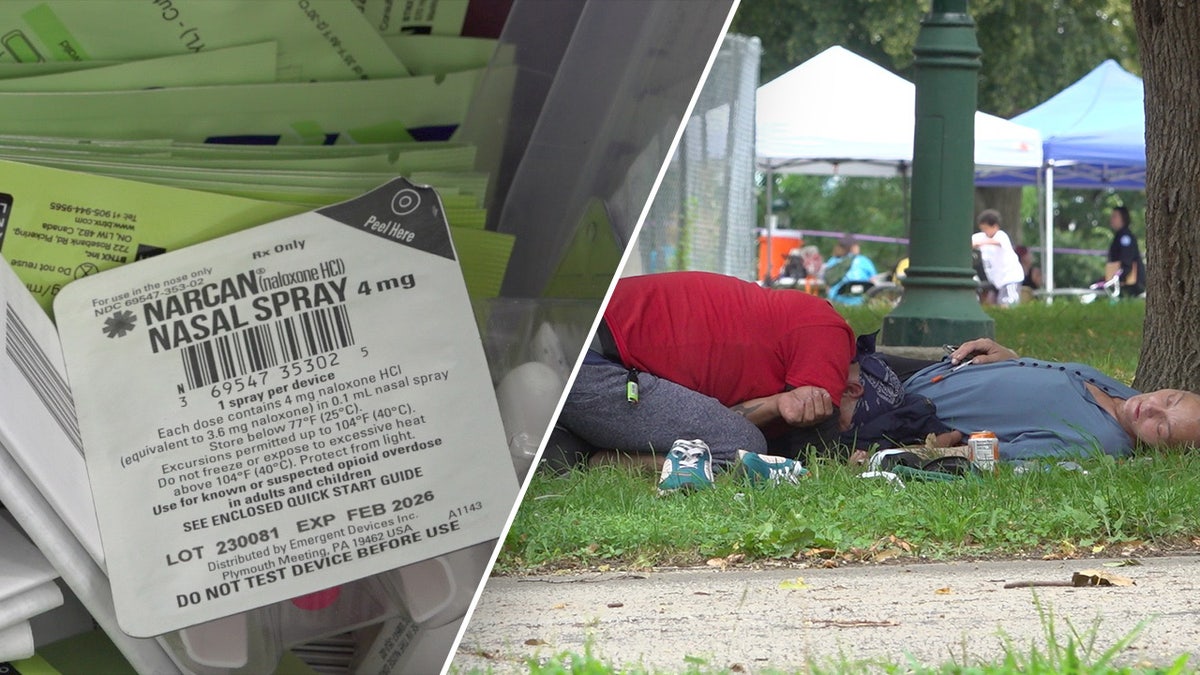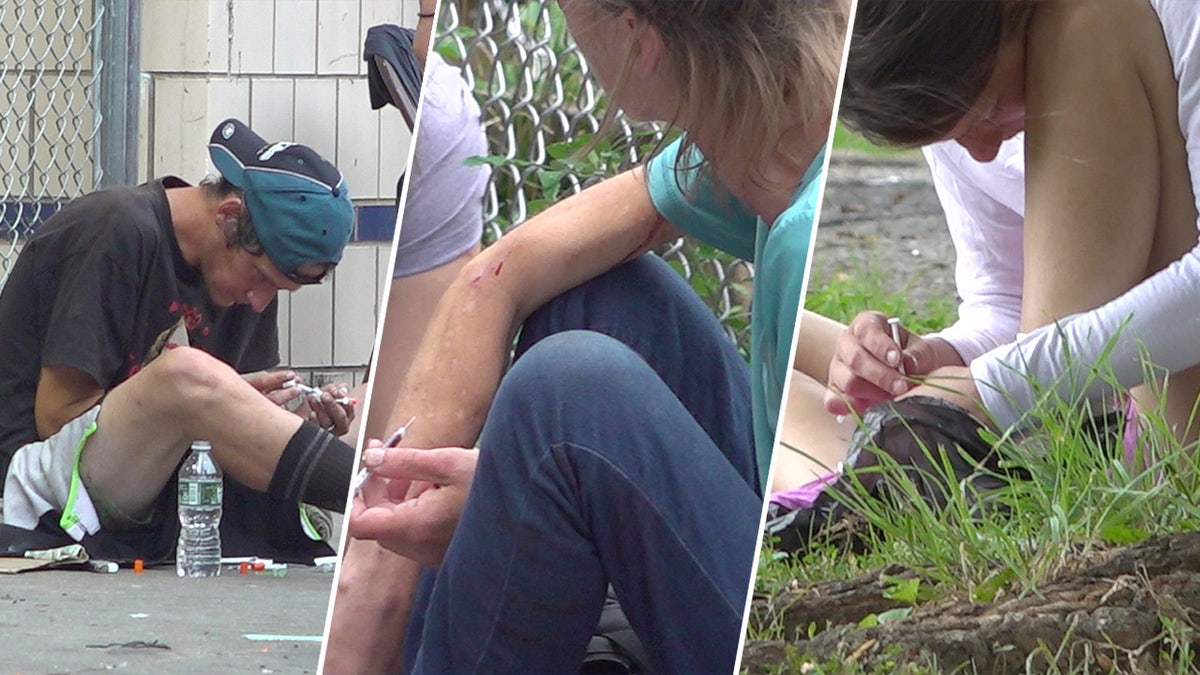WARNING: This story contains graphic images.
Philadelphia outreach workers are knocking on thousands of doors citywide to deliver free overdose reversal drugs and fentanyl testing strips as a new report showed fatal overdoses reached a record-high.
The Department of Public Health is partnering with Philly Counts for the door-to-door canvassing initiative providing residents with overdose prevention and treatment resources. The effort, which began this month, follows a city report published Oct. 2 that found unintentional fatal overdoses reached 1,413 deaths in 2022, an 11% increase since the previous high of 1,276 the year prior.
“Through this partnership, we can help ensure equitable access to harm reduction supplies and treatment resources in our Philadelphia communities and engage residents in becoming trusted messengers to further disseminate these tools so that we can reduce the number of overdoses,” the city’s director of community engagement, Vanessa Caracoza, told Fox News in a statement.
Kensington tranq users show their gruesome, flesh-eating wounds from unknowingly taking the potentially lethal substance. (Megan Myers/Fox News Digital)
The outreach workers are passing out tote bags that include the overdose reversal drug Narcan, testing strips to detect fentanyl in substances and a city resource guide, Philly Counts officials told Fox News. They’ve knocked on over 6,000 doors and have had nearly 1,000 conversations with residents since they started the initiative Oct. 6.
“The Health Department, Opioid Response Unit, and several other City agencies and partners are working diligently to meet the challenges of this evolving crisis, and we urge every resident to understand the widespread risks and learn about the life-saving resources that are available,” Philadelphia Mayor Jim Kenney said in a press release.

A Philadelphia city initiative is knocking on doors to provide residents offering overdose prevention and treatment resources as drug overdose deaths surge. (Megan Myers/Fox News Digital)
The city program wants to reach all community members, but will focus on areas with the highest rate of drug overdose increases, including Kensington. Part of that neighborhood — internationally infamous for its excessive public drug consumption — is included in the zip code that had the most overdose fatalities across Philadelphia with 193 deaths, a 14% increase from the previous year, according to city data.
On any given day in Kensington, dozens of drug users can be seen injecting themselves on sidewalks and in McPherson Park, locally known as “needle park.” Blood runs down their arms after removing syringes while others pass out on the pavement or stumble through the busy road in a stupor.

Kensington, known as Philadelphia’s open-air drug market, has gained international attention for its extreme public drug use. Drug users can be seen injecting themselves on sidewalks and in McPherson Park, otherwise known as “needle park.” (Megan Myers/Fox News Digital)
Heroin first plagued Philadelphia’s drug-ridden communities, then fentanyl. Now, xylazine, an addictive veterinary tranquilizer, is infiltrating the drug supply and giving its users flesh-eating wounds.
The substance — known as the zombie drug or tranq — was detected in about one-third of all overdose deaths, according to the 2022 city report. Most of the city’s overdose deaths – 83% – involved opioids, and the majority of those fatalities included fentanyl, the data showed.
“The 2022 overdose report underscores the urgent need for greater awareness and more tools to fight growing overdose epidemic in Philadelphia and across the U.S.,” Kenney said in a press release. “It is no longer accurate to call this an opioid epidemic; it is an overdose epidemic driven by an increasingly contaminated drug supply.”
But overdoses are not limited to Kensington’s open-air drug market. The city saw overdose fatalities in nearly every zip code and some racial groups have been disproportionately impacted.
Drug-related deaths among Black individuals citywide increased 146% between 2018 and 2022, according to the report.
WHAT THIS DRUG-RIDDEN COMMUNITY LOOKS LIKE ON AN SUMMER AFTERNOON. WATCH:
CLICK HERE TO GET THE FOX NEWS APP
“Rates of overdose have been rising steadily in Black and Hispanic communities in Philadelphia for the past few years,” Overdose Response Unit Director Noelle Foizen told Fox News in a statement. “Due to several historical factors, many people in those communities may not be willing to raise their hand as a person who uses drugs.”
Health Commissioner Dr. Cheryl Bettigole said in a press release that the drug overdose data showed the crisis wasn’t contained to Kensington.
“The risk is not confined to those who are dependent on opioids; people who use stimulants and those who only use drugs occasionally are also dying of overdoses, most often due to opioids mixed with stimulants,” Bettigole said. “We are committed to working with partners across the city to find new strategies to meet this growing threat.”